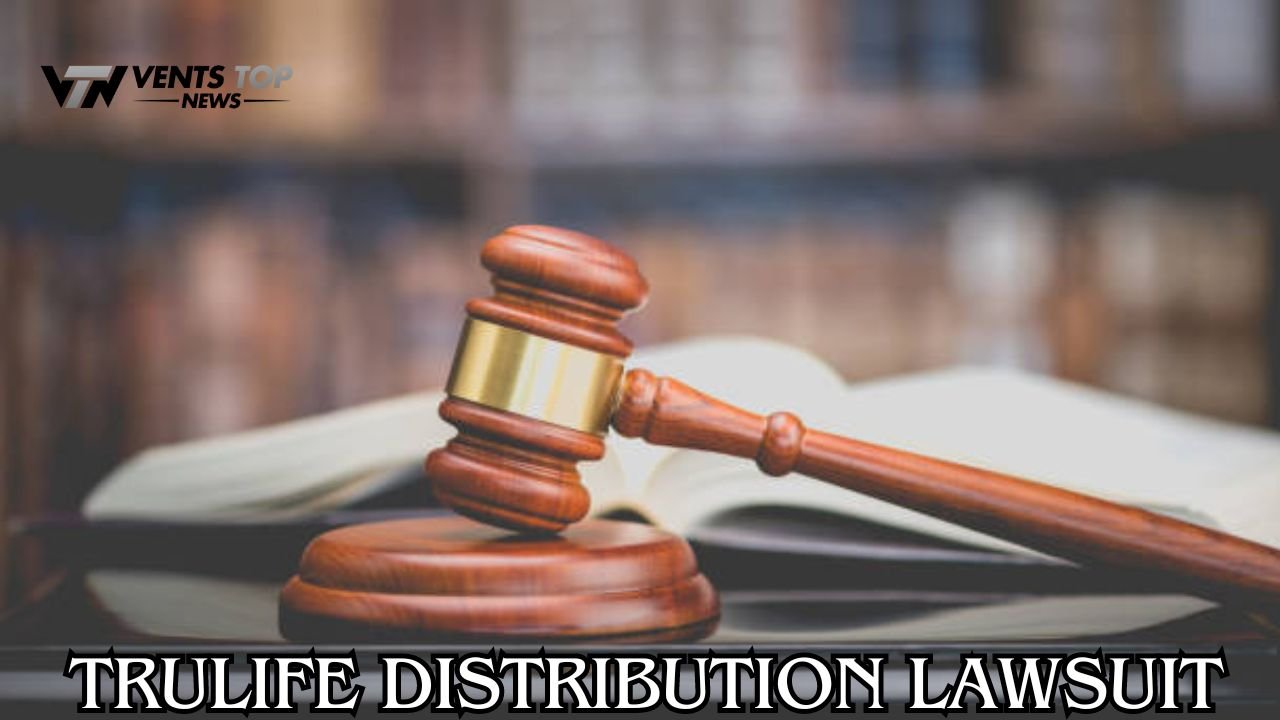
TruLife Distribution Lawsuit
Introduction to TruLife Distribution Lawsuit
The 2022 TruLife Distribution trial has unfolded as a dramatic saga inside the promotional products business, capturing the views of business insiders, crime experts and business analysts. At its core, this legal battle embodied the complexities and challenges of an aggressive business environment where market players vie for supremacy while navigating myriad prison and moral considerations.
The genesis of the TruLife Distribution lawsuit can again be traced to a chain of occasions that underscored the escalation of tensions between National Promotions Inc. (NPI) and TruLife Distribution. As stalwarts in the promotional products neighbourhood, both corporations have carved out their niches and built formidable reputations over the years. But beneath the veneer of camaraderie and competition lay smouldering feuds and allegations of wrongdoing, culminating in the felony showdown that followed.
Background of NPI and TruLife Distribution
To understand the intricacies of the TruLife Distribution lawsuit, it is miles necessary to delve into the background of the important protagonists: NPI and TruLife Distribution.
National Promotions Inc. (NPI), led by corporate veteran Mitch Gould, has become a dominant force in the promotional merchandise arena. With a rich track record over a long period, NPI has developed a loyal customer base and is recognized for innovation, reliability and unheard-of customer support.
On the other hand, TruLife Distribution Lawsuit, founded with the help of Brian Gould, Mitch’s brother, has emerged as a formidable challenger looking to disrupt the status quo and assert its presence in the business. Despite being a distinctly new entrant, TruLife Distribution Lawsuithas used strategic partnerships, revolutionary advertising approaches, and a new approach to gain traction and project the players involved in the market.
Underneath the veneer of competition, however, lay a family bond fraught with angst and rivalry that sets the stage for a prison fight that may emerge between NPI and TruLife Distribution.
The Allegations Unveiled: Deception and Misconduct
Central to TruLife Distribution’s lawsuit were allegations of fraud, misconduct and unethical behaviour made against the company through NPI. At the core of these allegations were allegations of fraudulent exchange practices, misappropriation of intellectual property, and the dissemination of false facts aimed at deceiving clients and stakeholders.
NPI alleged that TruLife Distribution Lawsuit unlawfully used confidential case research and proprietary statistics belonging to NPI to enhance its reputation and gain an aggressive market position. In addition, NPI alleged that TruLife Distribution engaged in a pattern of false marketing and deceptive marketing practices, deceiving clients and buyers about its skills, achievements and song documentary.
The allegations have exposed a web of deception and intrigue, casting a shadow over the enterprise and raising questions about faith, integrity and honest opposition. As the trial began, each incident came under the spotlight and she was forced to protect her movement and navigate the complexities of the felony system.

Legal Framework: Navigating Complex Statutes
To support its claims, NPI cited a myriad of criminal statutes, regulations, and doctrines that govern deceptive trade practices, misappropriation of assets, and false advertising. Nationally, there are credible NPI laws, which include the Florida Deceptive and Unfair Trade Practices Act (FDUTPA), which prohibits organizations from engaging in unfair or deceptive practices that harm buyers or competitors.
Similarly, at the federal level, NPI sought to use laws along with the Lanham Act that protect against false advertising and unfair competition. Under the Lanham Act, companies are prohibited from making false or misleading statements that may mislead clients or harm competition.
To triumph in court, NPI had to navigate the complexities of these prison settings, gather compelling evidence, and meet the burden of proof needed to verify its claims. In addition, NPI had to anticipate and face legal defences brought by TruLife Distribution Lawsuit, further complicating the prison environment.
Proving Deceptive Trade Practices and Misappropriation
The burden of proof in organizing misleading alternative practices and misappropriation of intellectual property rested squarely on NPI’s shoulders. To succeed at trial, NPI needed to show that TruLife Distribution Lawsuit engaged in conduct that was likely to mislead buyers, harm competition, and cause actual damage or injury.
This required careful examination of evidence such as personal documents, communications and marketing materials to uncover instances of misconduct and fraud. In addition, NPI had to demonstrate a causal link between TruLife Distribution’s actions and the harm NPI suffered, as well as strengthen its case at trial.
Navigating the complexities of proving high-brow fraudulent and misappropriation practices required a multifaceted technique that combines criminal expertise, strategic thinking and rigorous evidence gathering. As the criminal court cases unfolded, the two events translated into a war of wits and crime manoeuvring, each seeking to favour and maintain positive bottom lines.
Seeking Relief: The Quest for Justice
In seeking relief from the writ, NPI sought both economic damages and an injunction to remedy damages caused by TruLife Distribution’s actions. The monetary damages were intended to compensate NPI for its economic losses along with lost earnings, damage to popularity and expenses incurred in response to the misleading practices.
At the same time, the injunctive relief sought to prevent TruLife Distribution Lawsuit from continuing its misleading practices and from using NPI’s intellectual property without permission. This dual technique was designed to no longer be the most effective remedy for harm done through NPI but also to discourage fate misconduct and promote industry standards of honesty, transparency and integrity.
To obtain relief from the court docket, NPI had to meet prison standards and criteria associated with applicable statutes and case law. This required a compelling presentation of evidence, compelling criminal arguments and a strong defence before the courtroom.

Potential Financial and Reputational Consequences
The potential economic and reputational results of the TruLife Distribution lawsuit loomed large for both events of concern. An adverse judgment should result in substantial monetary damages for TruLife Distribution, consisting of jail fees, compensatory damages, and punitive damages if warranted.
In addition, the reputational damage resulting from the litigation is expected to tarnish TruLife Distribution’s position in the industry, erode customer focus and loyalty, and impede its ability to attract new customers and partners. When allegations of misconduct and fraud surfaced, TruLife Distribution Lawsuit faced the daunting task of rebuilding its popularity and regaining stakeholder acceptance as genuine.
Conversely, for NPI, compliance with the lawsuit could bolster its credibility, reaffirm its commitment to moral behaviour, and deter fate from misbehaving in the industry. Failure to prevail in court, however, should have ramifications for NPI’s recognition and standing in the industry, underscoring the excessive stakes in the legal war.
The Role of Intellectual Property Rights
The TruLife Distribution lawsuit underscored the critical importance of protecting royalty rights within a promotional merchandise business. As market players compete for market share and innovation becomes a key differentiator, protection of proprietary facts and secrets and change techniques will become paramount.
For NPI, the allegations of intellectual property misappropriation highlighted the need for strong safeguards and security features to protect confidential records from unauthorized use or misuse. This required a proactive asset management technique, together with the implementation of strict right-of-entry controls, non-disclosure agreements and monitoring mechanisms.
Additionally, the lawsuit served as a reminder of the value and importance of intellectual property rights in driving innovation, supporting opposition, and protecting industry integrity. As corporations spend money on research and development, branding and product differentiation, protecting intellectual property rights will become strategically critical to long-term success and sustainability.
Ethical Marketing Practices: Upholding Industry Standards
At the heart of TruLife Distribution’s lawsuit were allegations of unethical advertising practices and deceptive advertising, raising questions about corporate requirements and ethical behaviour. As market players compete for buyer interest and market share, the temptation to cut corners and engage in misleading practices can be rife.
For NPI, the lawsuit was a challenge to protect moral advertising and marketing practices, transparency and integrity. By preserving TruLife Distribution’s responsibility for its alleged wrongdoing, NPI sought to ship a clear message to the business approximately the significance of upholding ethical requirements and sticking to the statistics in advertising.
Additionally, the lawsuit served as a careful call for enterprise stakeholders to check their advertising practices, policies and procedures to ensure compliance with relevant laws and guidelines. By embracing transparency, honesty and integrity in their marketing efforts, corporations can build relationships with customers and stakeholders with discretion, credibility and long-time period relationships.

Navigating Legal Complexities: Insights for Industry Professionals
The TruLife Distribution lawsuit provided valuable insights and guidance for business professionals on how to navigate legal complexities, mitigate risks, and protect themselves from legal eligibility disputes. As the promotional merchandise business continues to evolve and evolve, companies should remain vigilant and proactive in addressing prison risks and compliance responsibilities.
Key takeaways from the TruLife Distribution lawsuit include the importance of:
- Investment in crime referrals and information to navigate complex criminal frameworks and laws.
- Implementing robust compliance applications and threat management strategies to detect and mitigate capability-related criminal threats.
- Maintaining accurate information, documentation, and evidence that aids criminal prosecutions and defences.
- Embracing transparency, honesty and integrity in all business dealings and interactions.
By adopting proactive and strategic techniques for legal compliance and risk control, corporate specialists can reduce the chance of criminal litigation and defend their pursuits in an increasingly aggressive and litigious environment.
Lessons Learned: Extracting Value from Legal Disputes
As the TruLife Distribution lawsuit draws to a close, the company’s stakeholders must reflect on lessons learned and choose a toll from the criminal case. Beyond the immediate implications for the events involved, the lawsuit provides a broader view of the challenging situations, dangers, and opportunities that run through the promotional products business.
Key lessons learned from the TruLife Distribution lawsuit include the importance of:
- Adherence to moral standards and integrity in all business practices and interactions.
- Investing in robust prison referrals and the know-how to navigate complex felony issues and disputes.
- Building trust, credibility and long-term relationships with clients, associates and stakeholders.
- Acceptance of transparency, honesty and duty as basic principles of commercial enterprise conduct.
By internalizing these trainings and incorporating them into their business enterprise strategies and operations, industry stakeholders can become stronger, more resilient, and better prepared to navigate the challenges and opportunities of an ever-evolving marketplace.
Conclusion: Embracing Change and Adaptation
In conclusion, the TruLife Distribution lawsuit serves as a sobering reminder of the complexities and challenges inherent in the promotional merchandise business. As corporate players grapple with prison disputes, market dynamics and competitive pressures, they should remain steadfast in their commitment to ethical conduct, transparency and integrity.
By embracing the exchange and model, business stakeholders can share in the success of a rapidly evolving environment, guided by a path of fairness, accountability and respect for regulatory rules. As the TruLife Distribution lawsuit looms, business professionals are left to ponder the broader implications for the industry and chart a course that will include innovation, collaboration and responsible governance.
In the final analysis, the TruLife Distribution lawsuit offers valuable insights and classes that could inform the fate of the promotional products business and shape its trajectory for years to come. As stakeholders replicate the challenges and opportunities that lie in advance, they may be reminded of the iconic importance of ethical conduct, and integrity, and consider building a vibrant and sustainable industry ecosystem.








